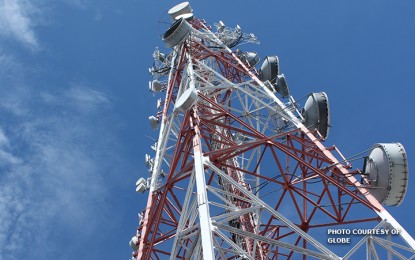
MANILA – Nine national government agencies on Thursday signed a joint memorandum circular (JMC) to streamline the processing of requirements and reduce delays in the construction of common towers in the country.
In a statement, the Department of Information and Communications Technology (DICT) said the document was electronically signed during a videoconference joined by the Departments of the Interior and Local Government (DILG), Public Works and Highways (DPWH), Human Settlements and Urban Development (DHSUD), Transportation (DOTr), and Health (DOH); Anti-Red Tape Authority (ARTA); Civil Aviation Authority of the Philippines (CAAP); and the Food and Drug Administration (FDA), and facilitated by the Philippine National Public Key Infrastructure (PNPKI).
It said the JMC complements the DICT Department Circular No. 008, s. 2020 that lays out the guidelines for “shared passive telecommunications tower infrastructure (PTTI),” also known as the common tower policy.
The DICT said the policy aims to encourage the growth and development of independent tower companies (ITCs) as a pioneering sector for the development of a robust ICT (information and communications technology) environment, “in line with the overall objective of enhancing wireless network coverage and quality of ICT services across the country.”
From an estimated 200 days, the DICT said the new guidelines aim to shorten the construction of common towers to only 16 days.
“With the passing of this JMC, ITCs (independent tower companies) will be unburdened with the multiple permitting requirements and can focus on the accelerated roll-out of PTTIs across the country,” the DICT said.
Aside from increasing internet speeds, signal strength and quality of connection in the country, it said the JMC will also help generate jobs even in remote areas.
“The increase in towers will mean an increase in speed, strength, and quality of connection for Filipinos. It will also stimulate the generation of jobs and economic activity, especially in unserved and underserved areas,” the DICT said.
The JMC states that multiple permits will no longer be required for the construction of common towers.
These include Sangguniang Panlungsod/Bayan resolution, Sangguniang Barangay/Council resolution, environmental compliance certificate or certificate of non-coverage if the proposed site of construction is outside an environmentally critical area, radiation safety evaluation report from the FDA, certified true copy of National Telecommunications Commission provisional authority, certificate of public convenience and necessity, and certificate of registration to provide telecommunication services.
The DICT added that a certificate of use for PTTIs will now be issued by the local Office of the Building Official instead of a certificate of occupancy “which demands more stringent standards.”
“A separate issuance for locational clearance guidelines is being drafted by the DHSUD in accordance with JMC provisions,” the DICT said.
CAAP, meanwhile, will no longer require a height clearance permit for common towers below 50 meters that are located outside CAAP critical areas (CCA), according to DICT.
“Instead, an Undertaking by a licensed geodetic engineer attesting that the PTTI will be built outside of CCA will be given for submission to the LGU,” it added.
To ensure timely processing of the remaining permits, it said the process will be closely monitored as local government units (LGUs) are now required to inform the DICT of the approval and disapproval of any building permit applications involving common towers.
“LGUs are likewise prohibited from requiring documents or clearances other than those expressly enumerated under the JMC,” the DICT said.
DICT Secretary Gregorio Honasan II thanked government agencies involved in the project for their participation and said the JMC was “a testament to the convergent efforts of the government to institute measures that will greatly redound to the benefit of the Filipino people.”
“The signing of the guidelines is a significant step in addressing the nation’s connectivity needs that have become more immediate because of the pandemic. The deployment of common towers, particularly in unserved and underserved areas, will improve not only internet condition, but also socio-economic welfare through ICT, in support of the President’s Balik Probinsya, Balik Pag-Asa Program,” he added. (PNA)
